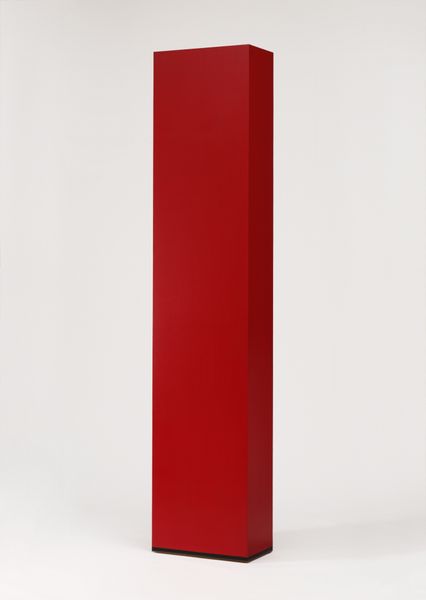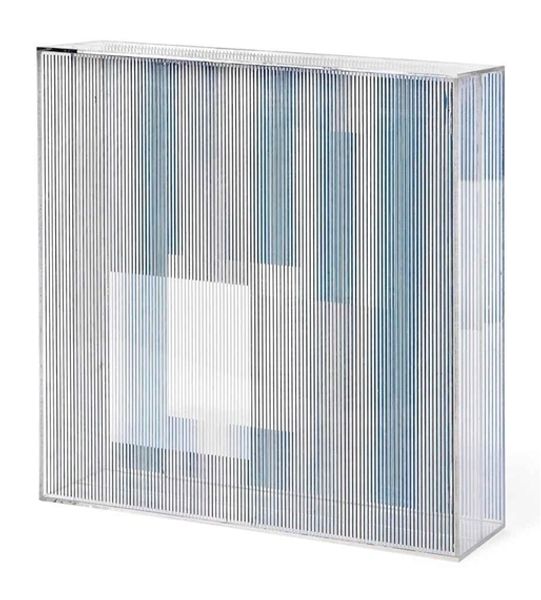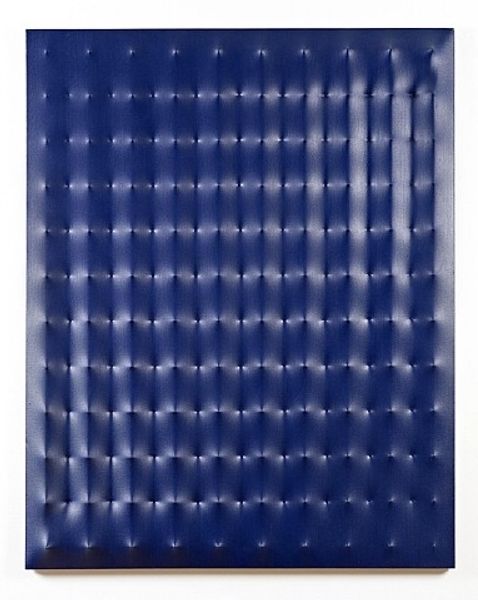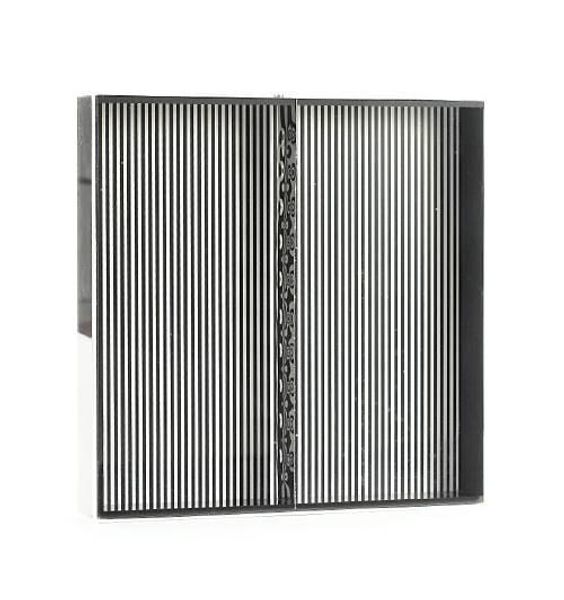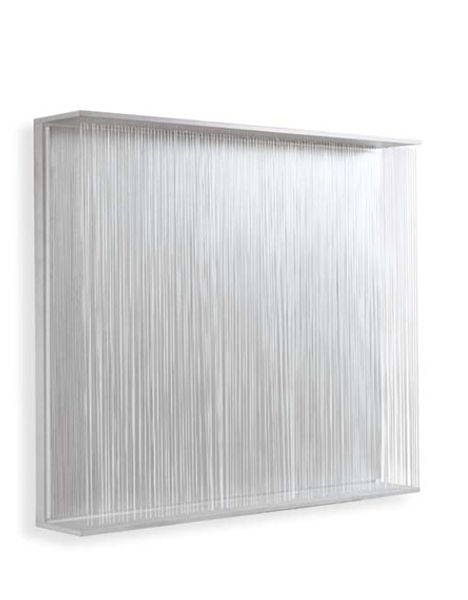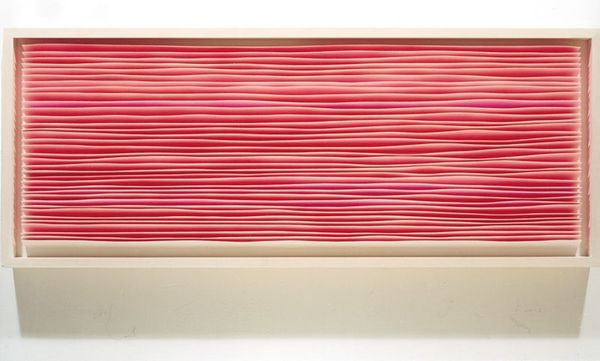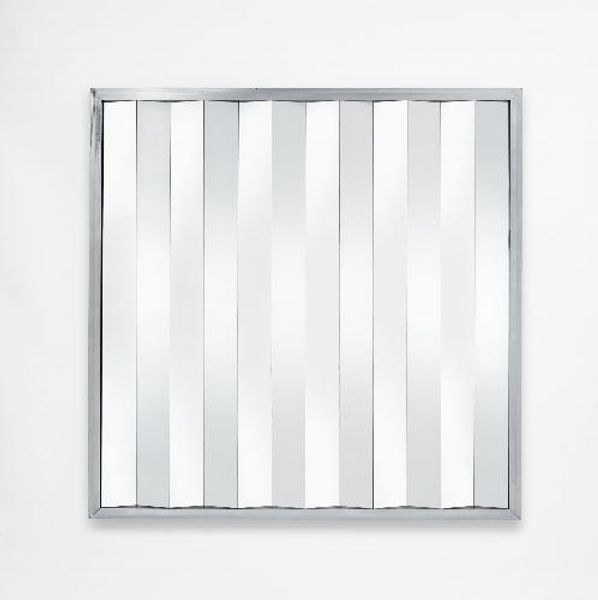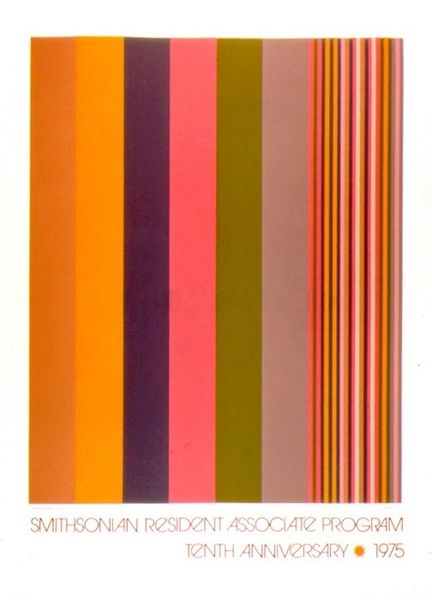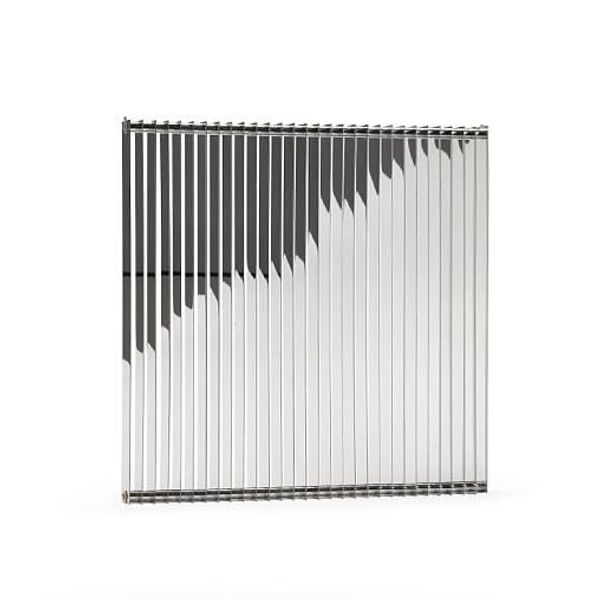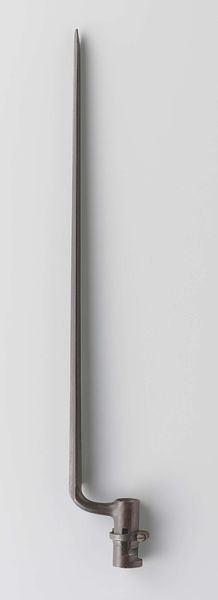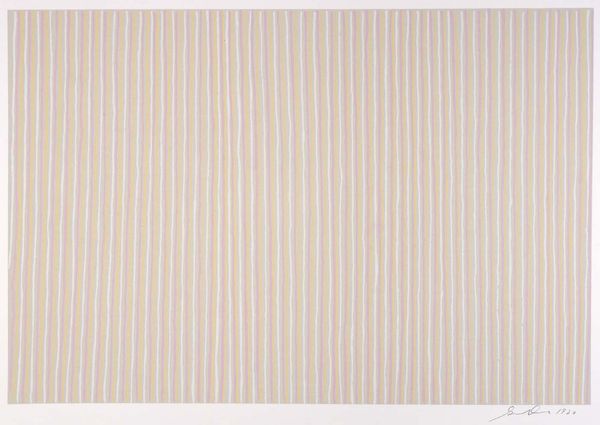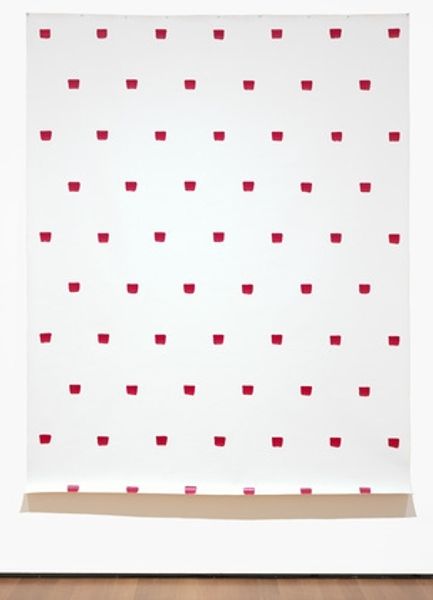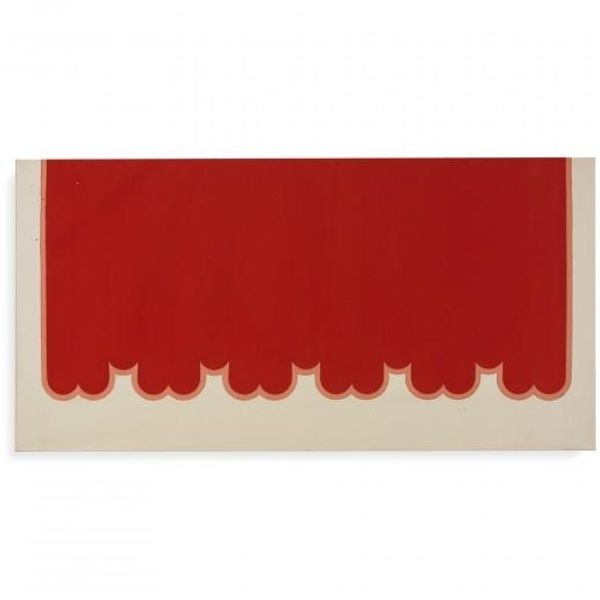
kinetic-art
op-art
geometric
geometric-abstraction
abstraction
line
Curator: Here we have Julio Le Parc’s "Relief #20," created in 1970. It is a striking piece of kinetic and op-art, notable for its simple geometric construction and visual complexity. What are your initial thoughts? Editor: Immediately, I’m drawn to the materials— the reflective chrome against those stark red and white stripes feels quite manufactured, almost mass-produced in its aesthetic. The linear red bars add a sense of unease, like a twisted take on confectionary. Curator: Exactly! Le Parc was a key figure in the kinetic art movement. This piece explores how the viewer's perception shifts based on their position and the movement of light. The rigorous arrangement and calculated use of line and reflection manipulate visual perception, engaging with the broader structural principles. Editor: The 'movement' implied by its title suggests process. How does the work achieve it? Does it rotate or mechanically shift? The chrome element acts almost like an assembly line, doesn't it? Or a piece waiting to be incorporated? Curator: It relies primarily on implied motion through visual disruption. The high contrast of the lines against the chrome induces what we could term as a "retinal shock." We sense dynamism without actual mechanical movement, challenging the very notions of perceptual stability and creating instability for the observer. Editor: In essence, this piece foregrounds industrial reproducibility—emphasizing line, material and production—and undermines ideas of the artist's touch? By democratizing visuality, it questions those high art narratives. How very subversive, considering it's also incredibly beautiful to behold. Curator: Absolutely. His art directly opposes the unique artwork and hierarchical thinking. The viewer is crucial; their encounter activates the piece's optical illusions. Editor: Well, its deliberate visual discord makes for an object where manufacture itself is highlighted. And I leave with a disquiet, feeling as if mass manufacturing could even cause anxiety. It shows that industrialization of perception could cause discord. Curator: Indeed. It's a reminder that abstraction isn't separate from materiality. A compelling demonstration of Le Parc's vision!
Comments
No comments
Be the first to comment and join the conversation on the ultimate creative platform.
